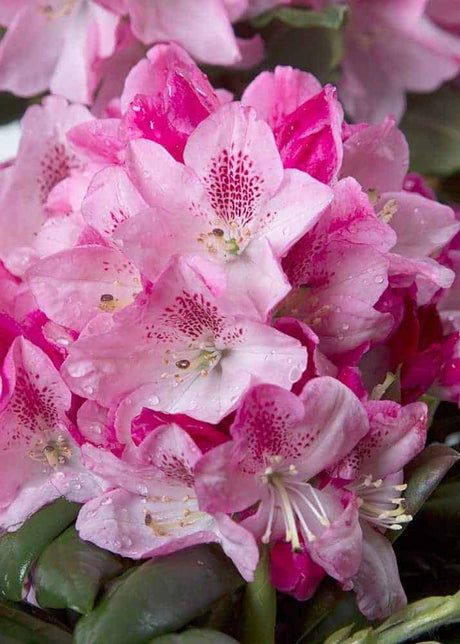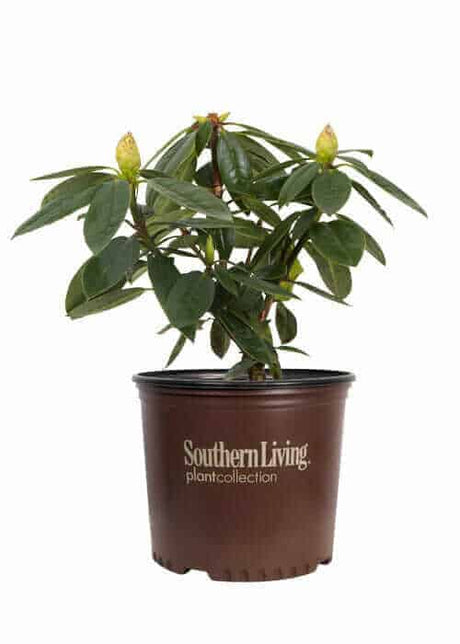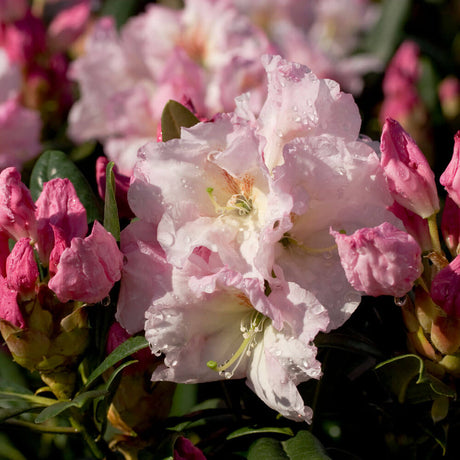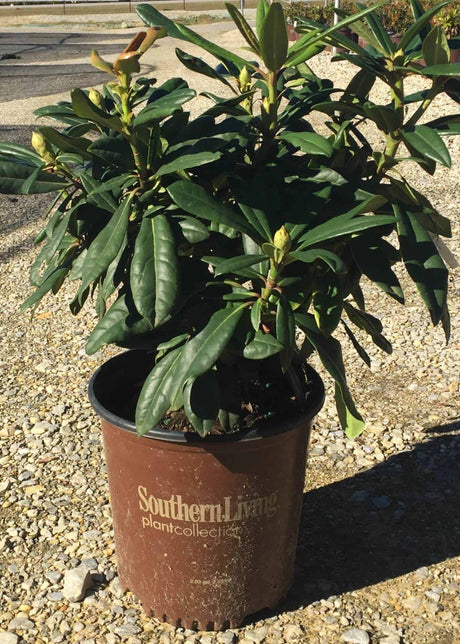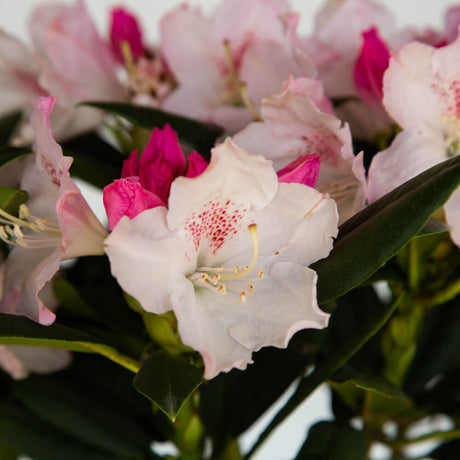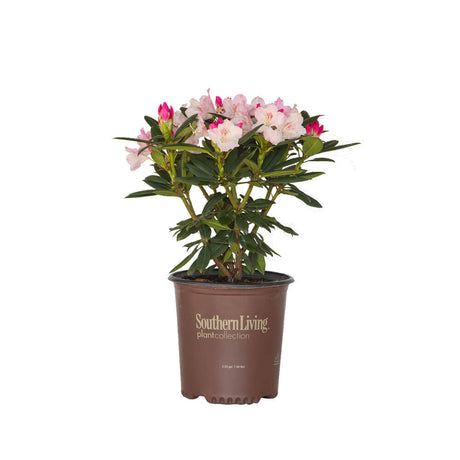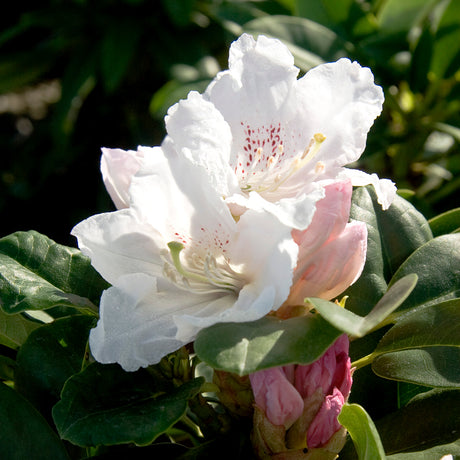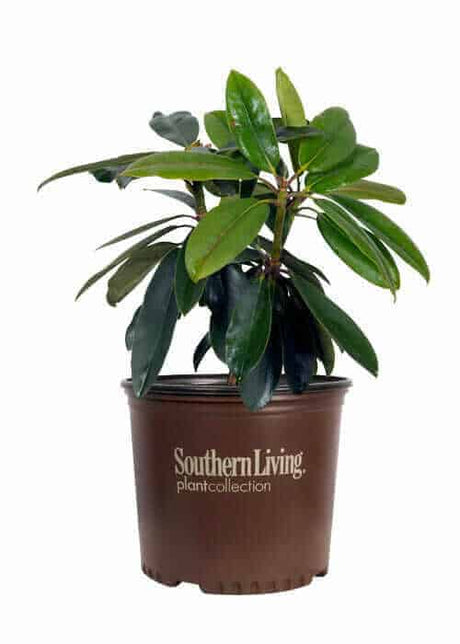FiltersFilter & Sort
Southern Living Plant Collection
Southgate Radiance Rhododendron
From $19.98Unit price /UnavailableIn stock (244)- Sold out
- Sold out
- Sold out
- Sold out
- Sold out
Rhododendrons are powerhouse bloomers that have been a favorite of gardeners since the 16th century! Their name comes from the Greek words for "rose" and "tree" - "rodon" and "dendron" respectively. They were first cataloged by Charles l'Ecluse, a 16th-century Flemish botanist.
They're very closely related to Azaleas. Essentially, all Azaleas are Rhododendrons, but not all Rhododendrons are Azaleas. You can see some familial resemblance if you compare their flowers. They're strikingly similar in structure. The primary difference is that Azaleas tend to have individual flowers, while Rhododendrons have clusters of multiple flowers.
Why Plant Rhododendrons?
This is an easy question. Let's go over some of our top reasons to plant these beauties.Their bloom clusters are bold and beautiful
Rhododendrons only bloom once a year in spring. However, they make sure that you get the most bang for your buck when it comes to blooms. Their flower clusters tend to range from 5-9 inches across, so they're difficult to ignore. They come in a wide range of colors too. White, pink, purple, red, everywhere in between, and mixtures of multiple different colors.They're evergreen and eye-catching even without flowers
They have elongated dark-green leaves that range from matte to somewhat glossy, with a leathery feel to them. These leaves are largely consistent throughout the year. They're an ideal background for their brilliant blossoms to shine on. This foliage grows upright and is a perfect choice for a medium to tall height element in mixed garden beds and foundation plantings.Rhododendrons are great for shaded gardens
It can be challenging finding colorful and dynamic additions to shade gardens. Fortunately, this is where Rhododendrons really shine. They provide reliable structure when not in bloom and they brighten up shady spots when they are flowering. They contrast beautifully with other shade plants such as various Mahonia and Plum Yew varieties. We also recommend planting them with the Florida Sunshine Illicium, for a bold foliage color contrast.When Should I Plant Them?
Fall and spring are generally the best times to plant these evergreens. Oftentimes, we recommend planting in fall so that you're able to enjoy early spring flowers without waiting until the next year's bloom cycle. If you're in a warmer USDA zone, such as 8b to 9b, you may also be able to plant in early to mid-winter successfully. In these areas, we recommend gardeners avoid planting them in late spring or summer. The intense heat may lead them to struggle.Where Should I Plant Them?
We recommend staying away from areas where the soil is clay-heavy. One of the more common killers of Rhododendrons (and Azaleas) is soggy soil, and clay soil is notorious for retaining moisture. It's also exceptionally heavy and dense. Therefore, it doesn't allow the roots to breathe properly. Clay also has a naturally alkaline pH and these plants prefer slightly acidic soils (pH below 7.0). If you do have clay soil, though, all is not lost. You can take steps to remedy it. For the poor drainage and denseness of the soil, you can mix pine bark in with your native soil. This will allow your plant's roots to have more space to breathe and will reduce the moisture-retaining capabilities of the soil. To lower your soil's pH, you can spread a mild soil acidifier around the base of your plant, such as elemental sulfur. This two-pronged approach will give your plant a much better chance of success. As far as sunlight exposure goes, a planting location that receives 1-3 hours of direct sunlight is just about ideal. This will result in the most plentiful foliage and flowers. However, all-day filtered sun works very well too. We recommend avoiding more direct sun than 3 hours, as this can often prove to be too much during the summer months. They're perfect for planting next to taller plants that might provide too much shade for other plants. For instance, if you have some large pyramidal evergreens in your foundation planting, like the Oakland Holly, you can tuck a few of these beauties in the shade that they create. They'll fill out those spots and bring additional color into your landscape during their bloom season. Similarly, they're also great if you have large hedges and you'd like to add a row of shorter plants next to them for a little extra pizazz.How to Plant Rhododendrons:
- First, determine your planting location based on the requirements of your particular variety.
- Most will have generally the same planting requirements but ensure that it has room to grow into your location, depending on its mature size.
- Dig a hole 3x as wide as the root ball of your plant.
- The hole should only be so deep that your plant sits even with the ground around it. If you have poor drainage, try planting it so that it sits a few inches above the soil around it.
- Mix your native soil with some good quality garden soil or composted manure to enrich your planting location and encourage root growth.
- Compared to regular compost, composted manure doesn't tend to raise soil pH as much.
- Backfill the hole with the soil mixture.
- Now is a good time to mulch and fertilize your plant. Use a slow-release acid-loving plant fertilizer. If you have less than 2-months before your first expected freeze of the year, use a rooting fertilizer.
- Mulch with 3-4 inches of bark mulch to help your plant retain moisture.
- Water your new planting deeply afterward and then 2-3 times per week for the rest of the growing season depending on the weather in your area (more frequently in extreme heat/drought, less often during wet weather).



















